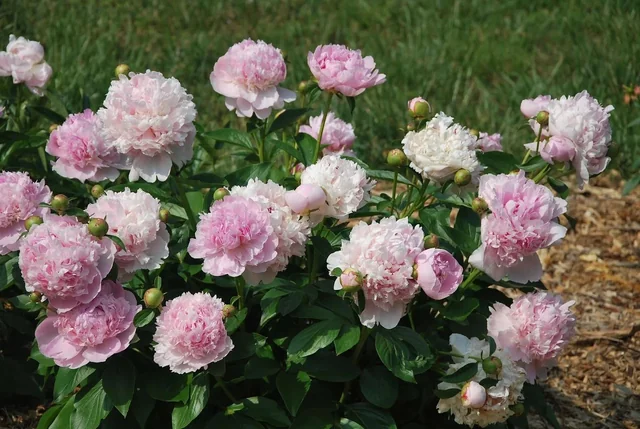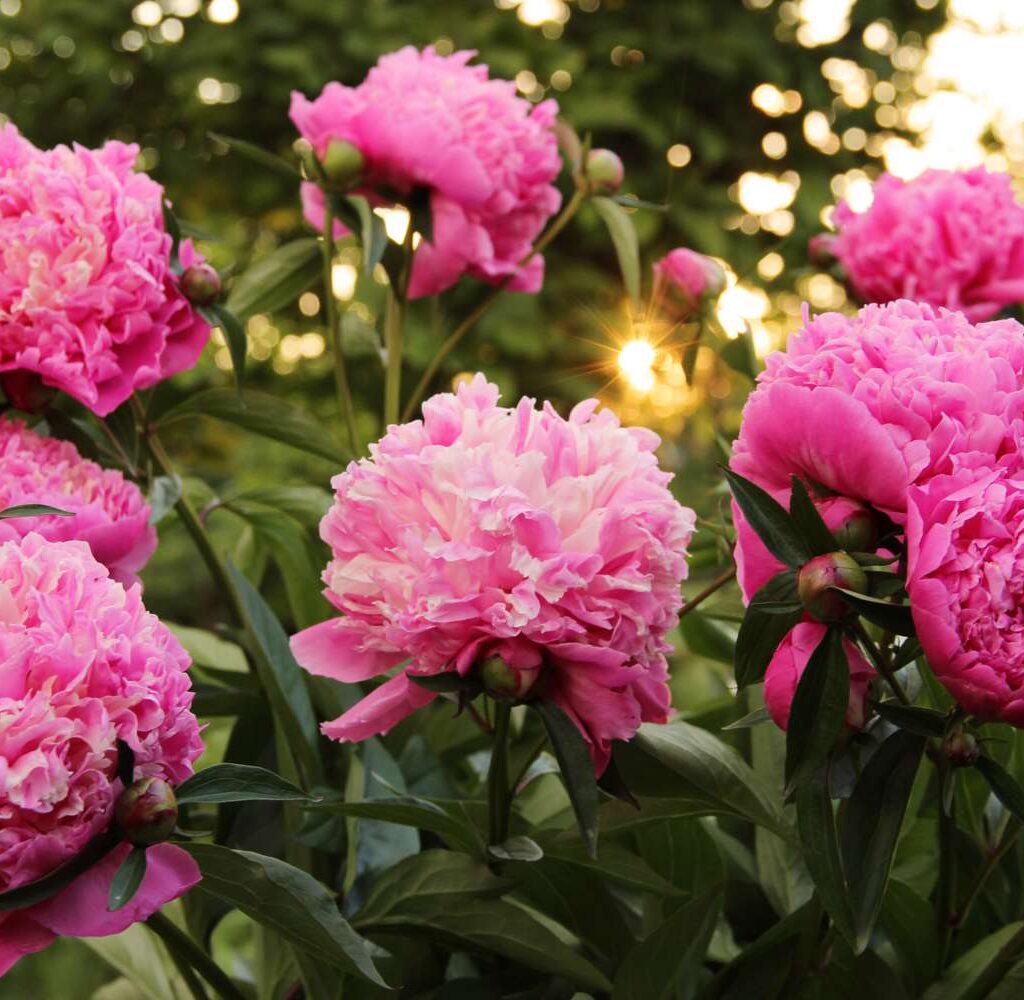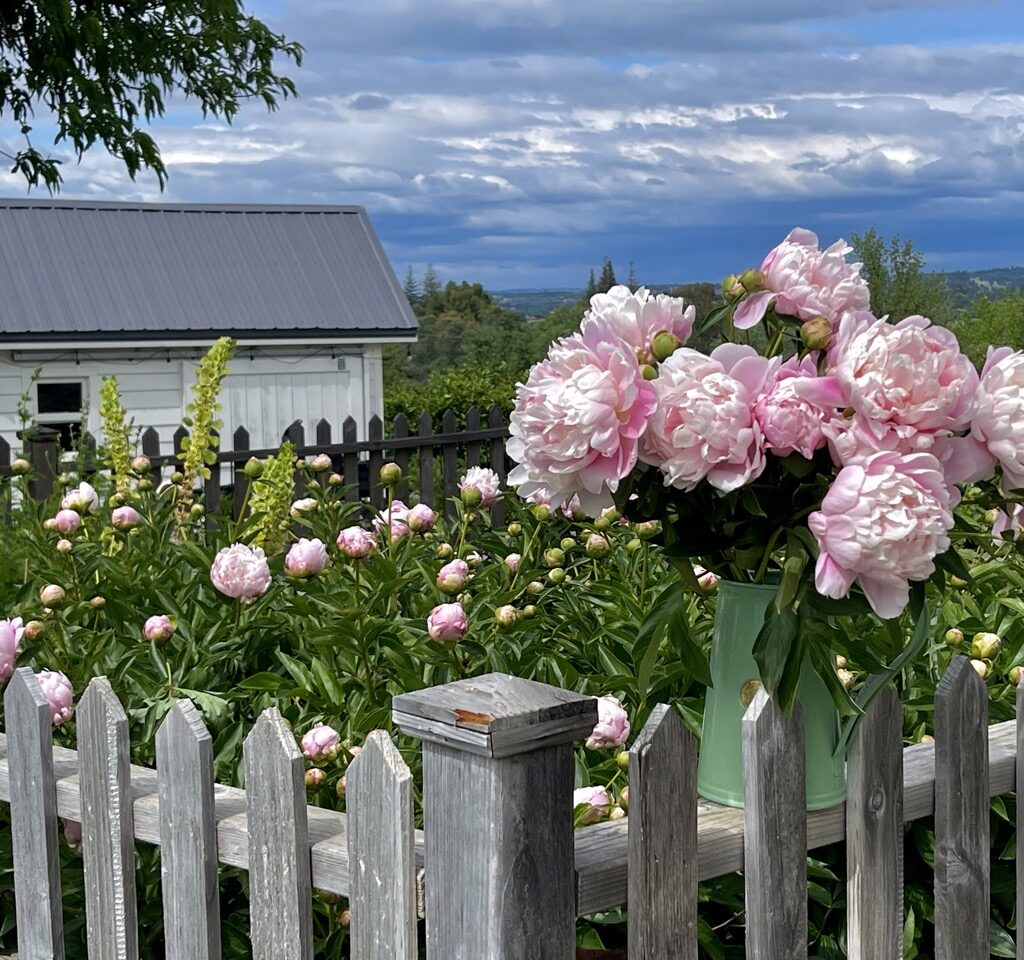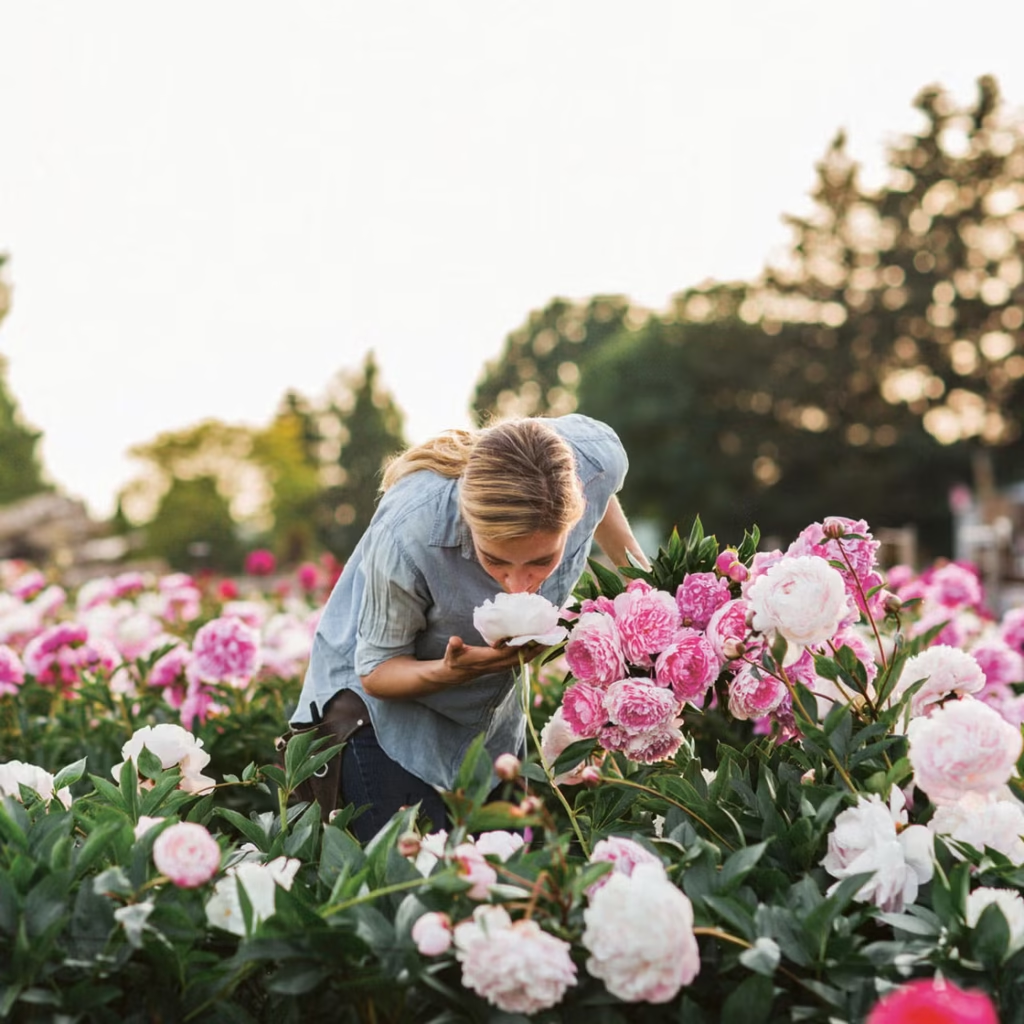Peonies are timeless garden favorites, celebrated for their lush blooms, vibrant colors, and captivating fragrance. These perennial plants not only add elegance and charm to any garden but are also relatively easy to grow and care for when provided with the right conditions. Whether you’re a seasoned gardener or a beginner, growing peonies can transform your outdoor space into a stunning floral paradise. This guide provides a complete overview of how to grow peonies in your garden and ensure long-lasting blooms year after year.
Why Grow Peonies?

Peonies are prized for several reasons:
- Beautiful Blooms: Large, showy flowers in shades of pink, red, white, and even yellow create an eye-catching display.
- Fragrance: Many varieties release a sweet, floral aroma, enhancing your garden experience.
- Longevity: Peonies are long-lived perennials, often thriving for 50 years or more.
- Low Maintenance: Once established, peonies require minimal care and are resistant to most pests and diseases.
- Versatility: Suitable for borders, flower beds, containers, and cut flower arrangements.
With proper planning and care, peonies reward gardeners with stunning blooms every spring and summer.
Choosing the Right Peony Variety

Peonies are classified into three main types:
- Herbaceous Peonies: Die back to the ground each winter and regrow in spring. Popular for garden beds.
- Tree Peonies: Woody shrubs that retain their structure year-round. Produce large, long-lasting flowers.
- Intersectional (Itoh) Peonies: Hybrid between tree and herbaceous types, offering vibrant colors and sturdy stems.
When selecting a variety, consider:
- Flower Color: Peonies come in white, pink, red, coral, yellow, and multicolor blends.
- Height and Spread: Choose according to your garden space. Herbaceous types range 2–4 feet tall, while tree peonies can grow up to 5 feet.
- Bloom Time: Different varieties bloom at different times, allowing you to enjoy peonies for several weeks when planting multiple types.
Ideal Growing Conditions

Peonies thrive when provided with the following conditions:
- Sunlight: Full sun (6–8 hours daily) is essential for abundant blooms. Light shade is tolerable, but flowering may be reduced.
- Soil: Well-drained, fertile soil is best. Peonies dislike waterlogged conditions, which can cause root rot.
- pH: Slightly acidic to neutral soil (pH 6.0–7.0) promotes healthy growth.
- Spacing: Space plants 3–4 feet apart to allow airflow and prevent disease.
Planting Peonies
1. Timing
Plant peonies in early fall (September to October) to allow roots to establish before winter. Spring planting is possible but may delay blooming the first year.
2. Planting Steps
- Dig a hole about 12–18 inches wide and deep.
- Mix compost or well-rotted manure into the soil to provide nutrients.
- Place the peony tuber so the “eyes” (buds) are 1–2 inches below the soil surface for herbaceous types; tree peonies should be slightly deeper.
- Backfill the hole, firm the soil gently, and water thoroughly.
Tip: Avoid planting too deep, as this can prevent blooming.
Caring for Peonies

1. Watering
- Peonies need regular watering during their first year to establish roots.
- Once established, they are moderately drought-tolerant but benefit from 1 inch of water per week during dry spells.
- Avoid wetting foliage excessively to reduce fungal disease risk.
2. Fertilization
- Apply a balanced fertilizer (10-10-10) in early spring when new growth emerges.
- Avoid over-fertilizing, especially with high-nitrogen fertilizers, which encourage leafy growth over flowers.
- Mulch around the base with organic matter to conserve moisture and add nutrients.
3. Pruning and Deadheading
- Herbaceous Peonies: Cut back foliage to 2–3 inches above the ground after it dies back in fall.
- Tree Peonies: Prune lightly to shape the plant and remove dead or damaged wood.
- Deadheading: Remove spent blooms during the growing season to promote tidiness, though peonies generally bloom once per season.
4. Supporting Stems
Tall peonies, especially herbaceous varieties with large blooms, may require staking or plant supports to prevent stems from bending or breaking.
Dealing with Pests and Diseases

Peonies are generally hardy, but occasional problems may arise:
- Botrytis Blight (Gray Mold): Causes buds to rot. Improve airflow, remove affected plant parts, and avoid overhead watering.
- Powdery Mildew: White, powdery coating on leaves. Treat with fungicide if necessary.
- Aphids: Small insects that suck sap. Spray with water or insecticidal soap.
- Ants: Attracted to sugary nectar on buds; generally harmless but can be removed if bothersome.
Maintaining good spacing, proper watering, and clean garden practices minimizes most issues.
Encouraging Abundant Blooms
- Sunlight Exposure: Ensure at least 6 hours of sunlight daily.
- Correct Planting Depth: Keep eyes at proper depth to encourage flowering.
- Patience: Peonies may take 2–3 years to reach full bloom potential.
- Avoid Disturbance: Do not move or divide peonies frequently; they prefer stability.
Propagation of Peonies
Peonies are propagated through division or seeds, though division is more common:
- Division: Done in fall after the plant dies back. Dig up the root, cut into sections ensuring each division has 3–5 eyes, and replant.
- Seed Propagation: Less common, takes several years to bloom, and is mainly used for hybridizing new varieties.
Propagation ensures you can expand your garden or share plants with friends and family.
Companion Planting
Peonies pair well with other perennials and shrubs:
- Hostas and Ferns: Provide leafy contrast to peony blooms.
- Irises and Lilies: Complement peonies with varied bloom times and textures.
- Lavender: Adds fragrance and helps deter pests.
Companion planting enhances garden aesthetics and provides continuous color throughout the growing season.
Seasonal Care
- Spring: Fertilize, stake tall plants, and monitor for pests.
- Summer: Water as needed, enjoy blooms, and deadhead spent flowers.
- Fall: Cut back herbaceous peonies, apply mulch to protect roots.
- Winter: Tree peonies may need protection in colder climates; mulch roots to prevent frost damage.
Benefits Beyond Beauty
- Cut Flowers: Peonies make long-lasting, fragrant floral arrangements.
- Wildlife-Friendly: Attracts pollinators like bees and butterflies.
- Longevity: With minimal care, peonies provide decades of blooms.
Adding peonies enhances the visual appeal, fragrance, and ecological value of your garden.
Conclusion
Growing peonies is a rewarding gardening endeavor that brings elegance, fragrance, and color to any outdoor space. By choosing the right variety, planting in well-drained soil with adequate sunlight, and providing consistent care, your peonies will flourish for years. From staking tall stems and pruning spent blooms to fertilizing and mulching, these practices ensure healthy plants and abundant flowering.
Whether used as a centerpiece in garden beds, a border plant, or a container specimen, peonies transform landscapes into stunning floral displays. With patience and proper care, these perennials become a long-term investment, offering beauty, fragrance, and garden enjoyment season after season.
Embrace the timeless charm of peonies, and watch your garden bloom with color, life, and elegance for decades to come.





